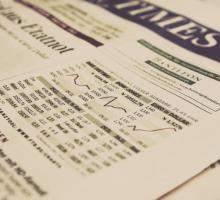The most common division of economics is that which separates macroeconomics from microeconomics. The difference between macro and micro was introduced in 1933 by the Norwegian, Ragnar Frisch. The origin of the words says a lot about their meaning: in Greek, macro means big and micro means small.
Macroeconomics studies the behavior of economic aggregates. Macroeconomic variables are associated with economic aggregates: a country, a region, the population of a country, all companies in a country. For example, the aggregate production of a country is formed with the production of all its businesses, families, individuals, and its public sector. Other commonly used variables in the study of macroeconomics are inflation and unemployment. John Maynard Keynes is considered to be one of the most important contributors to the analysis of Macro and Micro economics.
Microeconomics studies the behavior of individual economic units, like individuals, families, businesses, and the markets in which they operate. This is why it is also commonly known as the science that studies the allocation of scarce resources among alternative purposes. Microeconomic theory uses formal models that attempt to explain and predict the behavior of consumers and producers with simplifying assumptions. Microeconomic analysis is associated with the theory of prices and its derivations. Alfred Marshall is considered to be the greatest contributor to microeconomic analysis.
Is macroeconomics a Branch of Microeconomics?
One could say that the behavior of aggregate variables could be explained by first analyzing the behavior of the individual economic units and then by following up with an aggregation process. This idea, while having theoretical value, is impossible to put into practice due to the large number of variables, individuals, and markets that operate in the real world. Given the complexity of the discipline, the goal of macroeconomics is to find a way to simplify things in order to explain the behavior of aggregate variables. For example, instead of studying the market of each one of the existing goods, one can suppose that there is only one good in the market. Therefore, it can also be assumed that there is only one demand curve and one supply curve.
It is also worth noting that macroeconomic analysis is based on microeconomic considerations. In order to explain the aggregate savings rate, one can look at the microeconomic determinants that lead individuals, families and businesses to save. Currently, there is a tendency to incorporate more microeconomic fundamentals inside macroeconomic analysis.



